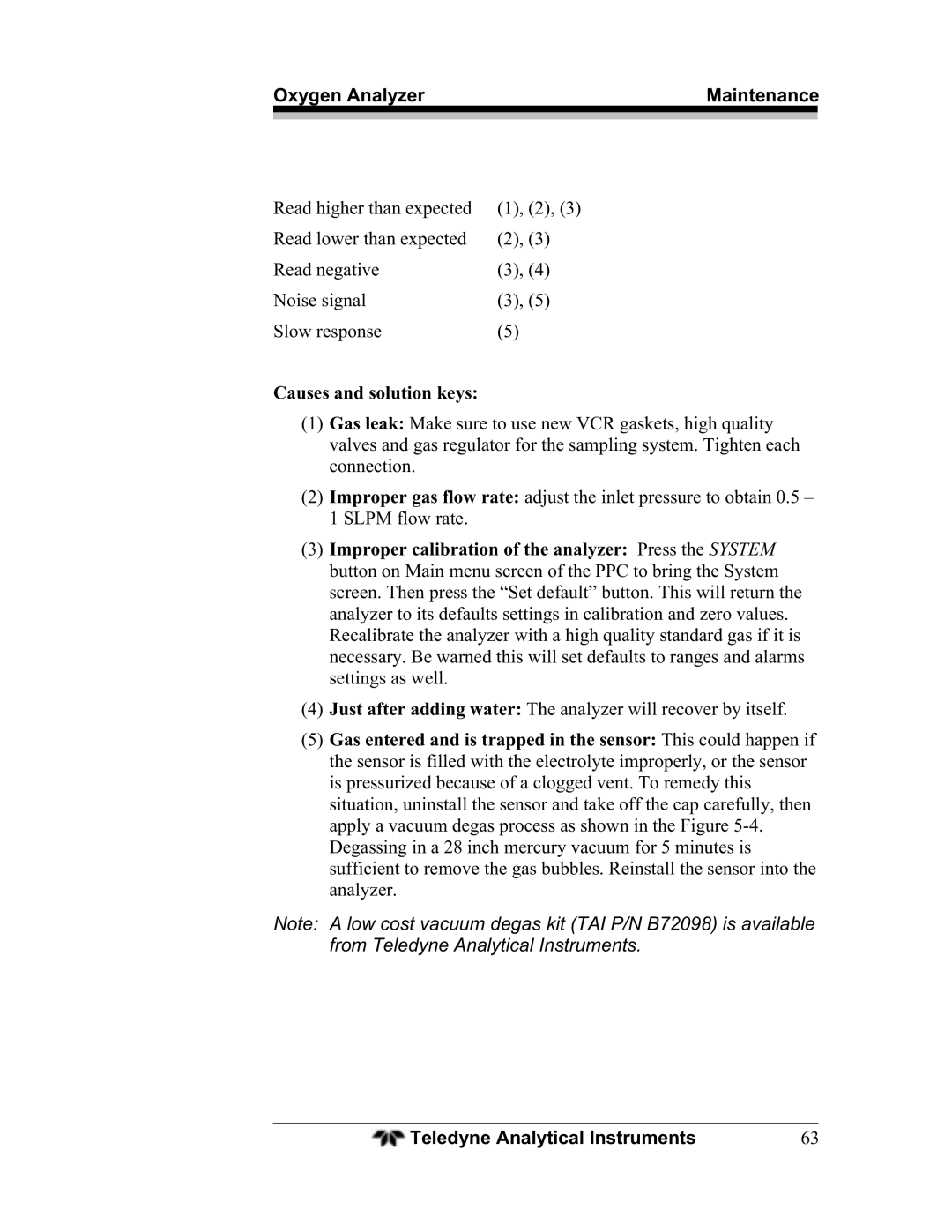Oxygen Analyzer | Maintenance | |
|
|
|
Read higher than expected | (1), (2), (3) |
Read lower than expected | (2), (3) |
Read negative | (3), (4) |
Noise signal | (3), (5) |
Slow response | (5) |
Causes and solution keys:
(1)Gas leak: Make sure to use new VCR gaskets, high quality valves and gas regulator for the sampling system. Tighten each connection.
(2)Improper gas flow rate: adjust the inlet pressure to obtain 0.5 – 1 SLPM flow rate.
(3)Improper calibration of the analyzer: Press the SYSTEM button on Main menu screen of the PPC to bring the System screen. Then press the “Set default” button. This will return the analyzer to its defaults settings in calibration and zero values. Recalibrate the analyzer with a high quality standard gas if it is necessary. Be warned this will set defaults to ranges and alarms settings as well.
(4)Just after adding water: The analyzer will recover by itself.
(5)Gas entered and is trapped in the sensor: This could happen if the sensor is filled with the electrolyte improperly, or the sensor is pressurized because of a clogged vent. To remedy this situation, uninstall the sensor and take off the cap carefully, then apply a vacuum degas process as shown in the Figure
Note: A low cost vacuum degas kit (TAI P/N B72098) is available from Teledyne Analytical Instruments.
Teledyne Analytical Instruments | 63 |
